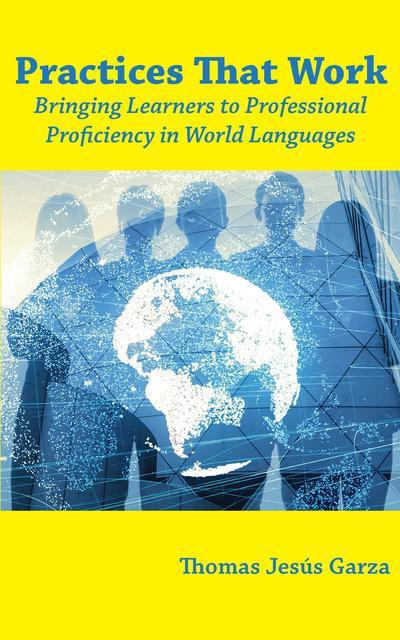Excerpt from Practices That Work (Garza): Tapping into Learner Motivation with Authentic Texts
Excerpt --
# 14
Tapping into Learner Motivation with Authentic Texts
Olla Al-Shalchi (University of
Texas at Austin)
Using authentic material in the
language classroom is essential. It not only helps build learners vocabulary
and grammar but gives them an insight into the culture of the region. During
the early stages in learning a language, it may be challenging to find
appropriate authentic materials, but when learners are at the Advanced level
aiming toward Superior-level proficiency, that challenge no longer exists and
the sky is the limit with the authentic texts available. Additionally,
authentic material motivates learners to continue learning the language because
they see that they are closer than ever to reaching professional proficiency.
Learners feel accomplished and proud when they are able to work with texts that
were intended for native speakers.
At the Advanced level, learners
after have mastered the most common grammatical structures and have learned
thousands vocabulary items, and it is important to have them continue to be
pushed to add on their vocabulary and expand their knowledge of the region as
much as possible. It is with language that we are able to comprehend and learn
and spark a fire and dig deeper in an area of interest. For this reason, the
topics that learners study need to be areas of interest, current and relevant,
and allow for debate and discussion in which there is no easy solution.
In my own Arabic class, learners
are exposed to topics that they may not have thought about and/or may have
limited background information on. For example, I teach a fourth-year Arabic
class in which learners are presented with units about various societal issues
that affect communities throughout the world. Learners learn about women’s
rights, artificial intelligence, living through a pandemic, and poverty and
hunger. All of these units are studied from various points of view: historical,
economical, religious, and literary, for example.
To give a clearer understanding of
how authentic texts are used, I present to you more detail about the unit that
deals with poverty and hunger, and the many different angles that are studied
within this unit. Learners learn about the role of different religions in terms
of poverty and hunger and what these religions say about helping those in need.
Televised interviews with scholars and religious figures are viewed. From an
economical perspective, learners examine which countries and ethnicities have
the greatest percentages of people living below the poverty line and factors
that contribute to poverty and how to prevent it in the future. From a
literature perspective, learners read Ghassan Kanafani’s short, powerful novel,
Men in the Sun, which tells the story of different men who are so
desperate to go after a better life to get away from living in poverty that
they are smuggled in an empty water tank in the scorching summer day across a
desert. None of the men survive the journey, and although the story is
non-fiction, it is a clear representation of the despair and struggle that so
many people went through during the 1950s-1960s and continue to go through. Learners
also study in depth at the aftermath of the Iraqi society dealing with U.N.
sanctions which lead the country to have tone of the worst healthcare systems,
suffering of malnutrition, an increase in death rates, and a lack in education.
A native doctor of the country was invited as a guest speaker in class, and
learners were able to hear firsthand how it was to live under these conditions.
Not only were they learning about a region they did not know much about, they
were learning about how an entire society did/did not survive such strict
sanctions.
In this one unit, not only are
learners exposed to the topics of hunger and poverty, but they do so in a way
that gives them a representation of a variety of facts from different points of
view all within the same topic. This practice provides learners with a thirst
to continue learning about the topic, all while being committed to using
authentic texts in the world language. Learners are motivated to continue study
of the language because they find these topics and materials—entirely in the
target language—interesting and compelling.
Further
Reading
Arechiga, Debbie.
2012. Reaching English Language Learners in Every Classroom: Energizers
for Teaching and Learning. New York: Routledge.
https://doi.org/10.4324/9781315856186
Kanafānī, Ghassān.
1991. Men in the sun and other Palestinian stories. Cairo: American
University in Cairo Press.




Comments
Post a Comment